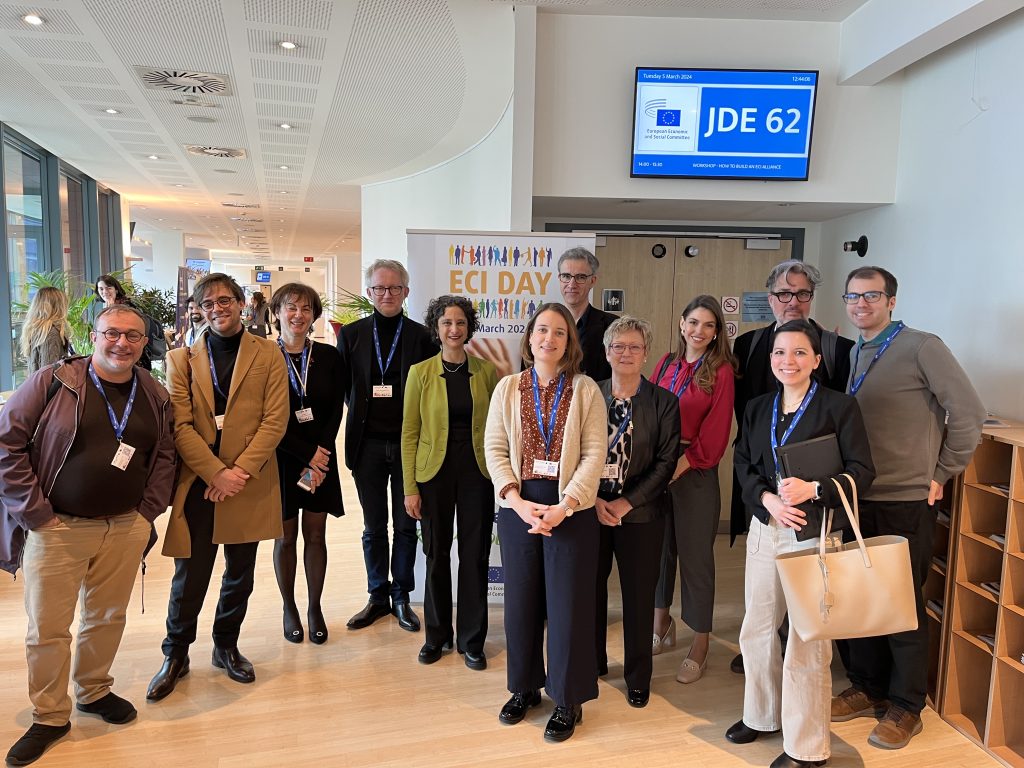Could integrating the existing instruments of EU citizen participation, such as the European Citizens Initiative (ECI) and European Citizens Panels (ECP), lead to greater citizen engagement, and what practical steps could be taken to achieve this synergy and enhance their impact?
This was the main discussion topic for the Panel ‘More deliberation, more impact? Connecting European Citizens Initiative and European Citizens Panels’ organized on 5th of March during the ECI day and as a part of the Civil Society Week in the EU Committee of the Regions in Brussels. The Panel brought together well-known intellectuals, practitioners and academic experts on citizen participation: David van Reybrouck, Prof. Graham Smith, Prof. Kalypso Nikolaidis, Prof. Paul Blokker. Another special guest who brought in a real-world perspective was Marlene Engelhorn, an Austrian multi-millionaire heiress and tax justice advocate, co-founder of taxmenow (initiative for tax justice) and an advocate for the use of randomly selected citizens councils to decide on distribution of inheritance funds.
Linking ECIs and ECPs is the next logical step in improving citizen participation in the EU. Such integration can not only make both instruments more effective and lead to a better institutional response. When integrated, both instruments can ensure a better involvement of citizens in key issues facing the EU today, be it the climate crisis, tax reform or constitutional change. The advantage of linking the two instruments is clear: where the ECI offers large-scale mobilisation of citizens and a more established legal framework, the ECPs offer in-depth deliberation for high-quality results and better solutions.
This was the key message unanimously endorsed by all panelists: The ECI and the European Citizens’ Panels are complementary and can therefore be combined in many beneficial ways. However, in order to strengthen the idea of a citizen-driven EU democracy, both instruments need to be strongly linked to the political system and have a visible impact on policy outcomes.
The latter requires three steps from EU decision-makers:
Step 1: Develop a set of concrete models for integrating ECIs and ECPs to maximise their impact on EU democracy.
Step 2: Apply the models of ECI-ECP integration for deliberation on a wide range of critical EU issues, including key policy issues, EU strategic priorities and EU reform issues, and evaluate the process, outcomes and impact.
Step 3: Establish the necessary legal framework to support the proposed models for the effective and efficient integration of these instruments.
The debate on citizen participation in the EU has developed remarkably. The EU has a well-developed and diverse set of participatory tools. The next step is to better connect them into a functioning participation infrastructure.
The recording of the Panel discussion can be accessed here.



